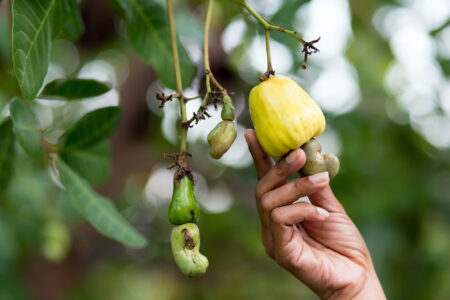Employment in Tanzania’s agriculture sector is said to be dropping while that in the manufacturing sector is on the rise, a change driven by agriculture mechanisation.
In its Integrated Labour Force Survey for 2020/21 report, the National Bureau of Statistics (NBS) shows that the employment percentage in agriculture (including forestry and fishing) dropped from 66.2 per cent in 2014 to 61.1 per cent in 2020/21.
At the same time, the report shows that employment in the manufacturing sector has increased from 6.7 per cent to 8 per cent in the same period.
- Data shows employment in agriculture dropped from 66.2 per cent in 2014 to 61.1 per cent in 2020/21.
- Agriculture mechanization agenda brings about the need to increase percentage of skilled labour.
- More labour force has been absorbed into the manufacturing sector is a sign of increased skilled labour
What do these figures mean? On the one hand, does it mean that fewer people are seeking employment in agriculture and more people looking for jobs in the manufacturing sector?
On the other hand, it could mean that ongoing government efforts to mechanise agriculture and develop its value chains in a bid to industrialize the economy are paying off. Could it be that the reduced figures in agriculture employment only indicate that people are been employed along the sector’s value chains and not in the traditional fashion as peasants working on a farmland?
Similarly, could it be that the increased number of employment in the manufacturing sector only indicate that their more value addition factories been set up along the agriculture value chains?
Either view spell good fortune for the country, one the one hand it may mean that the agriculture sector is mechanizing and on the other hand it means there are more opportunities opening up in the manufacturing sector, either way, it means that the national industrialization initiative is working.
By comparison, two decades ago in the year 2000, this figure was very different. The percentage of employment in Tanzania agriculture sector was 83 percent but as of 2020, the figure dropped to 65 percent of total employment in Tanzania.
However, as mentioned, the change in percentages could mean that the agriculture sector is developing into a much more modern and mechanised sector in accordance to national development plans, which prioritize agriculture mechanisation.
Tanzania agriculture mechanization: From substantial to commercial
As pointed out, Tanzania is well on its way to achieving agricultural mechanization. In the International Food Policy Research Institute 2020 report titled ‘Agricultural Mechanization in Tanzania,’ the organization points to the success of this national development initiative.
In another report titled ‘Industrialization in Tanzania: A window for entrepreneurial opportunity: the author Nyanjenge Mayala points out that; Shifting the labour force from agriculture to manufacturing remains the best option for the country to enhance efforts towards industrialization, thus increasing overall productivity,’ notes
The goal of agriculture mechanization is to increase productivity, but with mechanization comes the need for skilled labour and so the agriculture mechanization agenda also brings about the need to increase skilled labour in the country.
This is another good indicator of development because when more people are being employed in the manufacturing sector, it means that there is an increase in the number of skilled labour across the country’s workforce.
Read: Agriculture mechanization in Sub-Saharan Africa
“ It creates new skills and a work attitude, catalyses institutional change and fosters cutting-edge entrepreneurship. It serves as a means of modernizing the export structure and creating the base for sustained export growth, in conjunction with higher wages,” Mayala writes in the scholarly paper that was published by the Moshi Co-operative Tanzania.
Further still, increased industrialization and related agriculture mechanisation helps create employment that poor economies like Tanzania need. This is true as the country gets more and more graduates every year who need employment, this skilled labour is now employed in the mechanized agro-processing industries of an industrializing country.
“For that reason, industrialization has long been, and stays, the most powerful engine of structural change and modernization.”
After manufacturing comes the service sector, more and more Tanzanians are being employed in the service sector, another sign of a growing skilled labour. The NBS Labour Force Survey for 2020/21 report shows that employment in services increased from 27.1 percent in 2014 to 30.9 per cent in 2020/21.
The NBS report that indicates the decrease in the share of employment in agriculture and an increase of employment in manufacturing and services, points to a big structural change in the economy.
There is a shift, a change in the nature and composition of Tanzania’s workforce from labour-intensive to skilled labour. This shift is well received as the report authors describe it as ‘a good sign of economic transformation’ it is a sign Tanzania mechanisation.
The report authors contend that the fact that the proportion of labour employed in agriculture has decreased while that in other sectors, notably manufacturing and services, has increased, then it is a clear sign of an industrializing nation.
Agriculture mechanization in Tanzania is also evident in the fact that even though employment in the sector is decreasing, but the sector’s overall performance is actually increasing.
According to Tanzania’s Commissioner of Financial Sector Development, Dr Charles Mwamwaja, between 2015 and 2019, the agriculture sector grew at an average of 5.2 per cent, while the subsector of agricultural products continued growing at an average of 5.8 per cent.
“It means that the agriculture sector is served by a lesser labour force but yet it has sustained and even increased productivity,” reads the report.
As deduced earlier, another derivation from this data is an increase in skilled labour proportion in the country. The fact that more labour force is being absorbed into the manufacturing and service sectors, sectors that require high skilled labour, then it is a sign of increased skilled labour in the country, a welcomed fact.
According to the International Trade Administration agency of the US, ‘ Agriculture in Tanzania represents almost 30 per cent of the country’s GDP with three quarter of the country’s workforce involved in this sector.’
Also Read: Agricultural mechanisation centres in Uganda could revive sector
Financing agriculture mechanization in Tanzania
“Nothing beats the power of a skilled, knowledgeable farmer who is equipped with the right information at the right time in the right season,” comments Noelah Bomani-Ntukamazina, the Learning and Talent Development Manager at the Tanzania Agricultural Development Bank.
The African Development Bank Group has created what it calls the African Development Fund. Through this window, the bank has provided a US$93 million loan to the Tanzania Agricultural Development Bank that is meant to increase access to agricultural credit.
According to the Tanzania Agricultural Development Bank, the loans so extended have reached at least 105 farmer groups and cooperatives, covering 1.68 million farmers, who are responsible for 75% of the country’s agricultural production thanks to agriculture mechanisation in Tanzania.
Another impressive achievement backed by the Bank is the funding of some 19 agro-processing industries across 16 regions in the country. Thanks to the Bank’s support, these industries received US$45 million in credit to accelerate agro-processing.
As a result of this funding from the Tanzania Agricultural Development Bank, the industries are expected to significantly contribute to the achievement of the country’s industrialization targets as explicitly expressed in Tanzania’s Development Vision 2025, which promotes Tanzania’s mechanisation.











